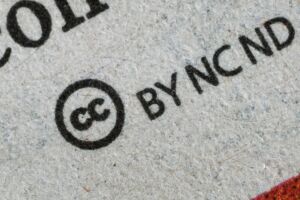If you are planning to write a book, copyright is going to be a big deal; especially if you plan on including materials that originated from other people (text, pictures, etc.). Copyright is something that you should always consider when you’re looking to add a quote/excerpt, picture, video, or anything else to a work that you didn’t originally produce. A copyright violation can have serious legal consequences, so you need to be sure that you pay attention to everything that you use for your book.
While this might seem daunting, it isn’t hard to make sure that you aren’t infringing on anyone else’s work. It only takes a few moments to add a citation or other attribution to your book. I’d like to share three simple tips for working with copyright in order to help you organize and make it easy. While this isn’t a comprehensive list (there are entire websites dedicated to copyright), my hope is that this will give you some quick and thoughtful methods of making sure that you avoid costly editorial (or worse, legal) fees associated with books that have neglected to consider copyright.
- Assume Everything is Under Copyright
This is the most basic, “safe” assumption you can have when working with any content you have not created yourself. Pictures, quotes, music, and other mediums are all easy to find online, and it is very easy to copy and paste. But just because you don’t see a copyright symbol somewhere doesn’t mean the content isn’t under copyright! Always be sure to search for the source of the image; look for “credits” that may point to a work’s original location; this could be a name, a link to another website, or some form of citation/bibliography. If you are having trouble locating the original source, contact the person who posted the content in the first place if you can. They should be able to provide you with the necessary info.
If you want to include a quote from someone else’s book, a citation giving the book’s publication info should be given. People quote other books all the time and give attribution through a citation. However, be sure to look over the copyright page! The author or company may require you to ask for direct permission in order for the excerpt to be used.
No matter what the medium is, if you want to use something that is under copyright, the best solution is to simply ask. Make sure you ask the owner of the rights! This is usually the individual who created the work, but there are exceptions, such as if the work is the product of a corporation. If the author of the work you want to use is an individual, get their written approval. If it is a corporation, contact their permissions department. Whether it is a person or a corporation, however, make sure that you save the letter, e-mail, or form that gives you permission (if granted). This way, you can be sure that you are protected from any legal backlash.
- Take Notes on Everything You Use
It doesn’t matter what it is; if it didn’t come from you, make a citation for it. If you are unfamiliar with citations, at least make a quick note of the publication information. Be sure to note when and where you found something and who it belongs to (IE, the title/author/page number for a book, or website/article title, access date, and URL for a web page). This information can then be passed on to someone who can help you create your citations, such as an editor.
A great (and easy) way to record the necessary information is to create a spreadsheet using Microsoft Excel. This way, you can see if there are any “blanks” in your publication info that might be a red flag. Plus, recording and organizing this information now saves the headache of trying to relocate it later. Telling yourself that you’ll “remember where it is” is especially dangerous if the source is a web page. Articles can be removed, edited, or moved to another URL (this is also why recording the date of when you found the information is important).
If you’d like to find out more about citations, you should consult an editor, the latest edition of The Chicago Manual of Style, or another appropriate text. University websites will often provide reliable information on how to properly cite your sources.
- If in Doubt, Leave it Out
Quite simply, if you are unsure of if something is under copyright, it probably is (see the first tip). Sometimes, you simply can’t find the necessary information. While it may be tempting to try to use that “perfect” picture or quote anyway, it may put you at risk if you decide to use it. Keep in mind that even if you can’t use that particular image or text, you may be able to find similar ones that have better documentation. I would almost guarantee that there will be an acceptable (or even superior) replacement out there.
Following these simple tips is a great way to make sure that your book doesn’t infringe on anyone else’s rights, and doing the little bit of work now can prevent a huge hassle down the road. If you’d like to learn more about copyright, there’s plenty of information out there (on the internet or in print) that can help you learn how to protect yourself and others; the US copyright office website is a great place to start (http://www.copyright.gov/laws/). Copyright doesn’t have to be a headache. Just remember to stay organized, ask permission, and give credit for what you use.

